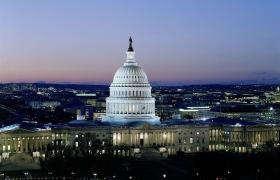Quick Contact

16th January 2019
As the title of this article suggests, Brexit (or rather the gross lack of a Brexit deal) is the biggest news rippling through markets today. Before we get into that though, here is a quick summary of how the AUD is performing today. As it stands, one Aussie dollar will buy you:
0.6998 US dollars
0.5371 Great British pounds
0.6045 euros
The UK and Brexit
Ahh, Brexit. It’s hard to believe that it’s been two and a half years since the initial vote for Britain to leave the European Union and yet, here we are, still talking about it… Anyway.
Overnight British MPs held a “meaningful vote” on Prime Minister Theresa May’s Brexit deal. As expected, May’s deal was overwhelmingly defeated by a massive 230 votes (432 against vs 202 for). This is one of the most crushing defeats in British parliamentary history.
So what does that mean for Brexit? If you’re a fan of politics, you may be excited by Opposition Leader, Jeremy Corbyn, moving for a vote of no confidence in May’s government. This will be debated on Wednesday evening UK time, however, the motion is unlikely to succeed as rebel Conservative party MPs will more than likely get behind PM May, and the Democratic Unionist Party (DUP) has indicated it will support the government.
Prime Minister May has stated that she will start talks with other parties and the EU again, with the aim of providing an update on Monday 21st January.
These developments are causing a lot of volatile movements, both up and down, in the GBP. It is unsure how markets will react to this morning’s news, as well as any new developments to come. With this in mind, if you need to purchase some pounds for your upcoming holiday, we recommend adding Rate Guard to your transaction in store. Should the AUD/GBP rate improve within 14 days of purchase we will refund you the difference. Oh, and did we mention it’s free?
Think of Rate Guard like the Nurofen (or should we say nEUrofen) for your Brexit headache.
China
The Aussie dollar has settled into a pretty tight trading range over the last five days, with a range of less than 1 cent.
Supporting the AUD is the announcement of China’s plan to introduce policies to stabilise their slowing economy. The National Development and Reform Commission signalled that it might roll out these policies, which include lower value add tax rates for select industries and tax rebates for others. This news has counterbalanced some of the negative impacts of reports released on Monday that show weakening imports and exports in China.
The weakening imports and exports have no doubt been exacerbated by the current US/China trade war. Tariffs on $200billion US worth of Chinese imports into America and $110billion US worth of US imports into China begin today, 16 January 2019. There is currently no resolution in sight for these tariffs, despite positive progress in the trade talks over the last few weeks. Tariffs will be an ongoing force of downward pressure on the AUD, due to our strong trade ties and reliance on the Chinese economy and the CNY.
USA
Overnight, Chief Executive of the Federal Reserve Bank of Kansas City, Esther George, became the latest Fed official to support a pause in the rate of interest rate rises in the US.
Why is this good for the AUD and Aussie travellers? As interest rates increase in the US, the USD becomes more appealing for investors as they will get a greater return. Therefore, fewer increases relative to Australia means less downward pressure on the value of our currency.
Australia
Aussie consumer sentiment (or confidence) has come under a bit of pressure off the back of falling house prices, lacklustre updates on Australian economic growth, global trade war concerns and political uncertainty.
The consumer confidence index for January comes in at 99.6. This is the first sub 100 reading since November 2017 and the biggest monthly decline in over three years. It also means pessimists outnumber optimists, even if only by a small margin. Whilst this has no immediately overt effect on the value of the Aussie dollar, it does indicate that consumers are potentially spending less, which could in turn lead to a slowdown in economic activity. It’s another piece of the puzzle the Reserve Bank of Australia (RBA) will look at when looking at the interest rate in Australia, and is definitely something to keep an eye on.
This blog is provided for information only and does not take into consideration your objectives, financial situation or needs. You should consider whether the information and suggestions contained in any blog entry are appropriate for you, having regard to your own objectives, financial situation and needs. While we take reasonable care in providing the blog, we give no warranties or representations that it is complete or accurate, or is appropriate for you. We are not liable for any loss caused, whether due to negligence or otherwise, arising from use of, or reliance on, the information and/or suggestions contained in this blog.
All rates are quoted from the Travel Money Oz website, and are valid as of 16 January 2019.
*Terms and conditions apply to Rate Guard. See https://www.travelmoneyoz.com/rate-guard for more information.













